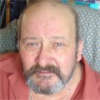 | Name: Victor Warman
Overview: Victor Warman`s father had been a Sick Birth Attendant in the Navy during the Second World War, and was very protective of his son after his diagnosis, advising him to avoid competitive sport. Victor left school at 15, spent much of his life as a machine-fitter, and ended up teaching Design Technology. His glucose levels go `up and down like a yoyo` and he now advocates plenty of exercise: `don`t do as I do, do as I say`. He has had several complications, but feels that diabetes is `not the be-all and the end-all of your life`.
Hits=2 |
|
| 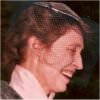 | Name: Beryl Smith
Overview: Beryl Smith first met children with diabetes when she was a student nurse and junior staff nurse at Birmingham Children`s Hospital from 1953 to 1957. She gave up nursing after she got married and didn`t encounter diabetes again until her own daughter, Catherine, was diagnosed in 1964, at the age of five. Catherine had so-called ‘brittle` diabetes, with frequent hypos – until she received two islet transplants in 2006/7. Beryl`s husband, David, developed Type 2 diabetes in 1983. At first he was on tablets, but was able to manage on diet alone after he lost four and a half stone.
Hits=1 |
|
| 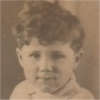 | Name: Allan Jones
Overview: Allan Jones` father was a miner with six children. They had little money but had to pay for insulin and equipment until the National Health Service was created in 1948. They couldn`t afford cotton wool and re-used needles until they were blunt. When Allan was 15 he got a job as a messenger on the railways but had to pass a medical before being promoted. He feared he would lose his job if his diabetes was discovered, so took with him a sample of his brother`s urine! He passed the medical and worked happily on the railways for 30 years.
Hits=1 |
|
| 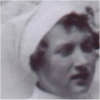 | Name: Monica Winn
Overview: Monica Winn was the only child of a naval officer and grand-daughter of a doctor who diagnosed her diabetes only 4 years after insulin was first manufactured in England. She nearly died of pneumonia; had bronchitis every winter; spent much time in bed and never attended school. Her parents were told she wouldn`t live beyond 14 and she was told that she wouldn`t have children. She had a daughter in 1945 and recorded this interview when she was nearly 86. She is very fit and copes well with slight memory loss after a series of mini-strokes.
Hits=1 |
|
|
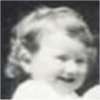 | Name: Joy
Overview: Joy was born seven years after her mother was diagnosed with Type 1 diabetes and from a young age took considerable responsibility for managing her mother`s care. Her aunt and two uncles also had diabetes, so Joy grew up thinking it was not unusual for people to test their urine, measure their carbohydrate intake and eat meals at precise times. She trained as a dietitian from 1967 to 1971 and has always specialised in diabetes. She has worked as a District Chief Dietitian in Surrey for over twenty years.
Hits=1 |
|
| 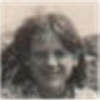 | Name: Mary
Overview: Mary`s father was a baker and her mother a factory worker. When she was diagnosed, the hospital suggested that they should buy a book on diabetes by R.D. Lawrence, but she doesn`t think they read it. She feels she was given very little information, and remembers thinking that her diabetes might disappear when she began to have periods at 15. She made little effort to control her diabetes until she went to a clinic in Oxford in 1983. She works as a podiatrist and reckons that about 75% of her patients have diabetes
Hits=1 |
|
|
 | Name: Julia
Overview: Julia was the first member of her family to go to university, and she taught in a primary school before specialising in teaching dance. Between her diagnosis in 1989 and the recording of this interview in 2004, she spent time in hospital for a variety of reasons, including the births of her three daughters. The biggest changes she noticed during these years were the increasing role of specialist nurses and also a shift to patient control: at first she was automatically put on a drip, whereas later the staff began to trust her to manage her own diabetes.
Hits=1 |
|
| 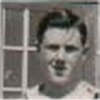 | Name: Ron Craythorne
Overview: Ron Craythorne worked all his life in the family business of carpentry and joinery but, when he retired, there was no-one to take over, so now he and his wife give shows for charity, showing people round the old workshop and selling the products of his woodturning. (He carved and painted the wooden fruit and bowls shown in his photo.) He has played team sports all his life and diabetes has caused him few problems. However, he knows of the problems it can cause, from members of the diabetic group he founded several years ago.
Hits=1 |
|
|
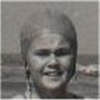 | Name: Victoria
Overview: Victoria`s father was a bank manager and she attended a private school and a grammar school. At 16, she developed an eating disorder after a boyfriend dropped her because she was diabetic, and at 25 she briefly rebelled against her diabetic diet. Otherwise, she feels diabetes has caused few problems and hasn`t prevented her from achieving her ambition of becoming a teacher. She thinks perhaps it did influence her not to have children, but she enjoys life with her partner, and is grateful for new blood testing equipment and other developments which have given diabetics greater freedom.
Hits=1 |
|
| 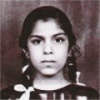 | Name: Bena
Overview: Bena was born in the Kigezi District of Uganda, the daughter of a wealthy businessman. She was diagnosed when nearly 12 and then shunned by children who thought diabetes was contagious. She lived on chapattis and spinach and a bitter vegetable juice thought to cure diabetes. When Idi Amin expelled Ugandan Asians in 1972, her family came to England, and she was delighted to be allowed to eat a wider range of food. She eventually married an Englishman and had two daughters. She works as an office administrator, in a social services department that supports disabled children.
There are also interviews with Bena`s daughter, Emma and her husband, Terry.
Hits=1 |
|
|
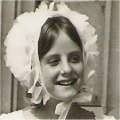 | Name: Harriet
Overview: Harriet was diagnosed when she was 12, and loved Great Ormond Street Hospital, where she was treated until she was 17. Her grammar school couldn`t cope with her diabetes, so she left at 15 to do O and A Levels elsewhere, and eventually gained a Diploma in Fine and Decorative Arts. She has worked for the Tate Gallery and for a company that bought art for corporations, and has also run her own business, and worked in college and university administration. Her daughter was diagnosed with diabetes at the age of 9.
There is also an interview with Harriet`s husband, Greg.
Hits=1 |
|
|
| Search returned 12 matches |